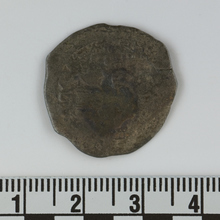
Coin
MOA: University of British Columbia
3095/1492
Byzantine coin of Alexius I, 1081-1118. Obverse: Christ, enthroned. Reverse: bust of Alexius I, facing front; he wears a jewelled chlamys; to left, he holds a cruciform sceptre; to right, he holds a globus cruciger; to left, inscription says ‘Λ’.
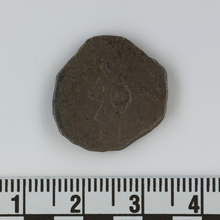
Coin
MOA: University of British Columbia
3095/1491
Byzantine coin of John II, 1118-1143. Obverse: Christ, standing on a footstool and facing front; he has a nimbus cruciger around his head, which is a cross within a halo; he raises his right hand in benediction; in his left hand, he holds the Book of Gospels; to left, inscription says ‘IC’; to ri...
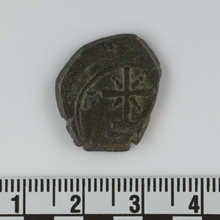
Coin
MOA: University of British Columbia
3095/1490
Byzantine coin of Manuel I, 1143-1180. Obverse: large cross resting on two steps; at centre of cross, there is an ‘X’; to left, inscription says ‘IC’; to right, ‘[XC]’. Reverse: bust of Manuel I, facing front; he wears a loros, an embroidered and jewelled scarf; to left, he holds a labarum, which...
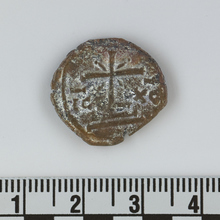
Coin
MOA: University of British Columbia
3095/1489
Byzantine coin of Manuel I, 1143-1180. Obverse: large cross resting on two steps; at centre of cross, there is an ‘X’; to left, inscription says ‘IC’; to right, ‘XC’. Reverse: bust of Manuel I, facing front; to left, he holds a labarum, which is a military standard. The inscription on the obverse...
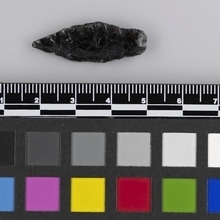
Point
MOA: University of British Columbia
H1.182 a
Small, diamond shaped, biface point made of shiny, black stone. Point has flake scarring on either side.

Hair Ornament
MOA: University of British Columbia
Aa152 a-g
Long beaded fragment (part a) on fibre strand consisting predominantly of white beads and interspersed with red and blue beads. Fragments of brown-orange gourd fruit from largest to smallest (part b, c, d, e, f, and g).
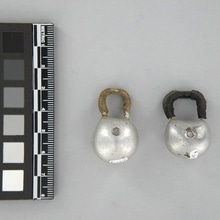
Earrings
MOA: University of British Columbia
Aj147 a-b
Pair of plain, round, tin metal earrings with metal hoops attached at tops and covered with material. Part a has leather covering the hoop, and part b has brown-yellow rubber covering the hoop. The small groove in each earring is filled with dirt in some areas.
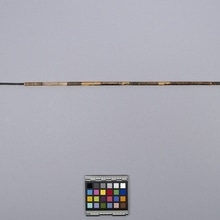
Arrow
MOA: University of British Columbia
Aa40 a-b
Metal double-barbed point (part a) with rough metal shaft (part b), fitted and sinew-wrapped in socket of shaped wooden section. This is inserted into a reed section, sinew-wrapped and glued with pitch. Intermittent wrappings of sinew continue down length of shaft. The end of the reed is notched.
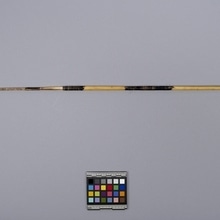
Arrow
MOA: University of British Columbia
Aa39 a-b
Metal double-barbed point (part a) with a bark-covered fore-shaft, fitted into a sinew-wrapped reed (part b). The arrow is a series of reed and wood fitted together and glued with black pitch. The reed sections have further pitch-blackened sinew wrapping at the centre, end, and near the bark fore...
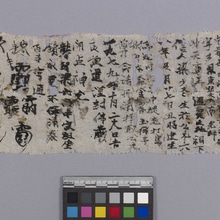
Document
MOA: University of British Columbia
2848/21 b
Many rows of Chinese characters written on very thin, off-white paper.